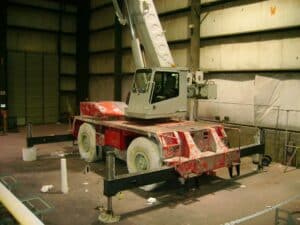
By Tim Hillegonds
I think it was probably my second full week as an employee in the insurance industry. It was just over ten years ago, and I was shuffling around the 29th floor of a downtown Chicago high-rise in a new pair of square-toed Payless loafers and an ill-fitting dress shirt. I think my official title may have been “Risk Management Coordinator,” but my only real job duties that first week were to attend meetings, take notes, and try to understand what in the world the people around me were talking about.
At one point, someone told me to find a specific “policy file,” and I was frozen with fear. I knew what a policy was. I knew what a file was. But I had absolutely no idea what a policy file was. Then, in a meeting a couple hours later, someone used the words risk mitigation, loss control, and premium finance, and it was all I could do not to have a nervous breakdown, return my Payless loafers to the store, and spend the twelve dollars I got back on a six-pack of Old Style.
The point that I’m trying to make is that every industry has its own jargon, its own lingo, its own way of confusing anyone who doesn’t happen to be in it. The crane industry talks about headache balls, boom pendants, and outrigger boxes. Heavy haulers talk about super loads, drop decks, and lowboys. And insurance folks talk about things like subrogation, coverage gaps, and duty to defend. Each industry communicates in a way that can be difficult to understand to the layman—nonetheless, imperative to conducting business intelligently.
Due in part to the proverbial language barrier that exists between the insurance company and policyholder, there are some common misconceptions that exist. And because these misconceptions can ultimately end up costing the insured more money, I thought it prudent to talk about two of them.
1. The insurance company will pay the amount I’ve stated on my insurance policy if my equipment is totaled.
Perhaps one of the most repeated misconceptions in regards to crane insurance is the notion that insurance companies will pay losses based on the stated values submitted by the policyholder. However, in order to comprehensively explain what I mean by that, we first have to understand the difference between “actual cash value,” or ACV, and “replacement cost value,” or RCV.
Insurance policies are either written on an ACV or RCV basis. If the policy is written to consider ACV, the insurance company will reimburse the cost of a piece of property minus depreciation (or obsolescence). If it is written on an RCV basis, the insurer is obligated to pay the cost to replace the damaged or totaled piece of equipment or property with new property of like kind and quality without any deductions for depreciation.
Essentially, the stated value—that is, the value of the piece of equipment that a company submits to the insurer—is only contemplated when calculating premiums, not when claims are actually paid out. (Unless the stated value is lower than the ACV or RCV. In that case, the insurance company will usually pay out the lowest number.) So, when a policyholder puts a value on a piece of equipment that is higher than what that equipment is worth in the hopes that he or she will be paid a larger sum if the piece of equipment is totaled, that individual has really only succeeded in over-paying for his insurance coverage. The best thing a policyholder can do is try and assign values that accurately reflect the true value of the equipment. By doing so, the policyholder will be paying the fairest price, as well as being compensated fairly in the event of a claim.
2. Insurance companies are too lazy to subrogate after my claim is paid.
If I’m being completely honest, I have to admit that there are, and will continue to be, carriers to whom this statement applies. But more often than not, it’s in everyone’s best interest for the insurance company to try and recoup its loss. It’s better for the policyholder and the insurer to recover monies paid. But it shouldn’t be looked at as an initiative that applies only to the insurance company.
A proactive policyholder will help frame out the case for the insurance company. After all, who knows the players in the game better than the crane company involved in the claim? Sometimes, it can be as simple as giving the contact information of the responsible party to the insurance company, and sometimes it can involve doing a little bit of research to determine what the best argument for someone else to pay is. Anything a company can do to point the insurance company’s subrogation department in the right direction will be helpful. And that little bit of help just might make a big difference on your loss run.
Like any industry, misconceptions are out there. The key is to understanding why they’re misconceptions and not facts. And the next time you have a question, ask your broker. He’s paid to know the answers.




